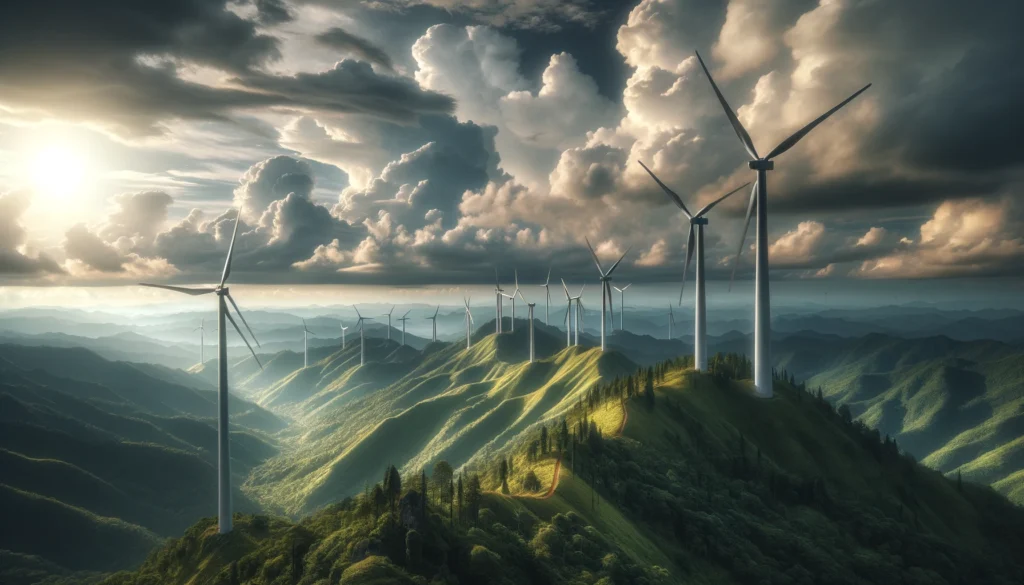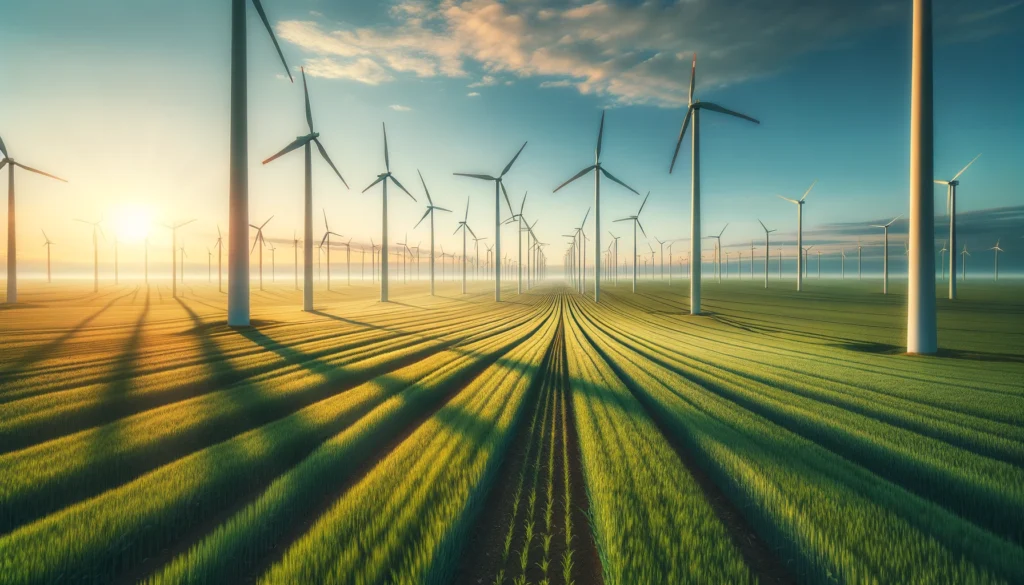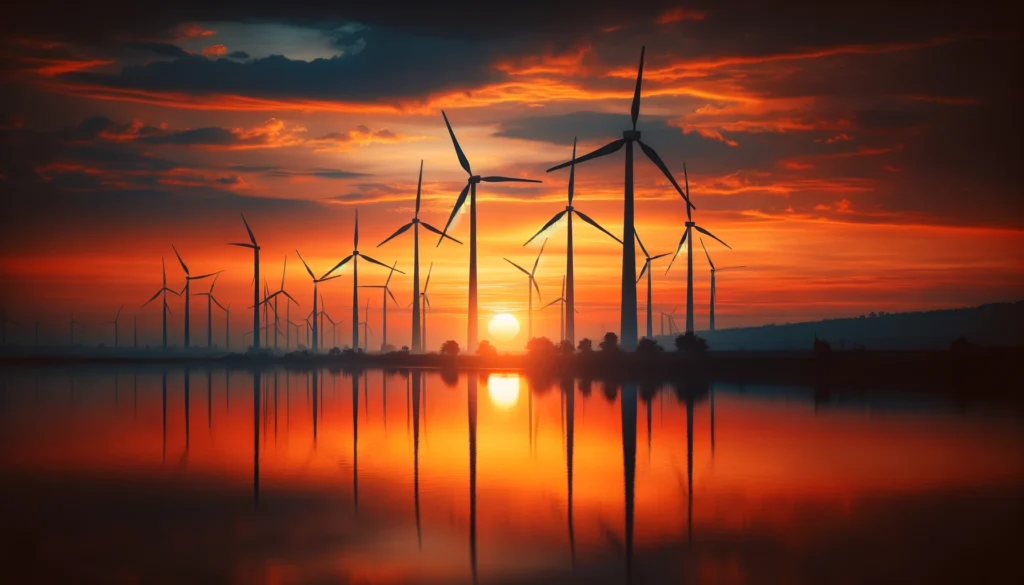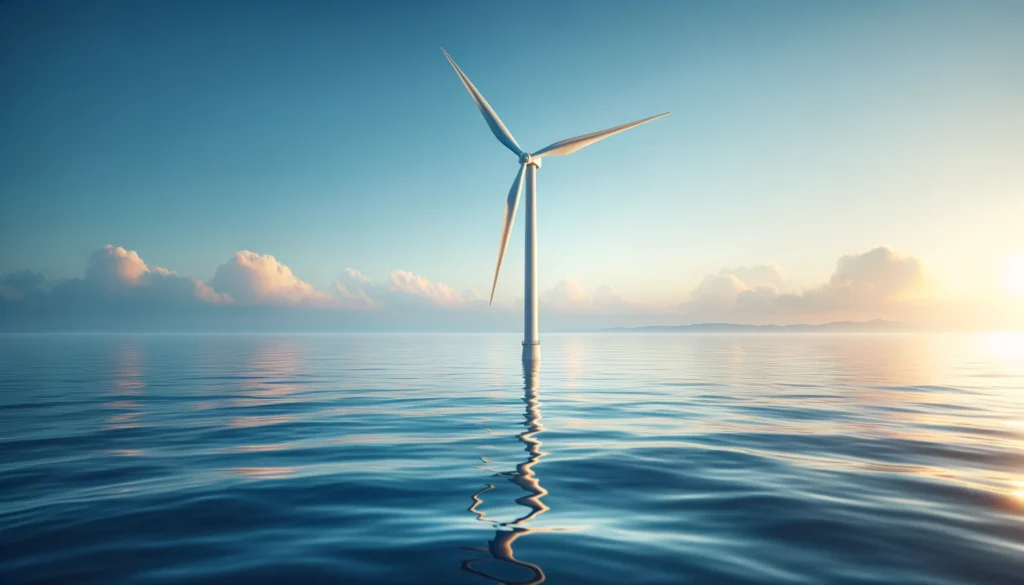In an era where renewable energy sources are gaining prominence in the global energy landscape, wind power stands out as a formidable contender. Harnessing the power of the wind to generate electricity has emerged as a sustainable solution to mitigate climate change and reduce dependence on fossil fuels. This article delves into the vast potential of wind power, exploring its benefits, challenges, and current trends shaping the renewable energy sector.
Table Of Content
We invite you to read: “Wind Power Myths vs. Facts: Separating Truth from Fiction”

The Rise of Wind Power
Wind power has experienced exponential growth in recent years, becoming one of the fastest-growing renewable energy sources worldwide. Advancements in technology, coupled with increasing environmental concerns and government incentives, have propelled the expansion of wind farms across diverse landscapes, from vast plains to offshore locations.
Benefits of Wind Power
- Clean and Renewable: Wind power is a clean, renewable energy source that produces minimal greenhouse gas emissions, making it environmentally friendly compared to fossil fuels.
- Abundant Resource: Wind is an abundant resource available globally, with the potential to meet a significant portion of the world’s electricity demand.
- Cost-Competitive: With advancements in turbine technology and economies of scale, the cost of wind power has become increasingly competitive with traditional energy sources, such as coal and natural gas.
Harnessing Wind Energy
Wind energy is harnessed through the use of wind turbines, which convert the kinetic energy of the wind into electricity. These turbines consist of large rotor blades mounted on a tower, which spin when exposed to the wind. The rotational motion drives a generator, producing electricity that can be fed into the power grid or used locally.
Onshore vs. Offshore Wind Farms
While onshore wind farms are more common and cost-effective to deploy, offshore wind farms offer several advantages, including stronger and more consistent winds, reduced visual impact, and proximity to densely populated areas, minimizing transmission losses. However, offshore wind projects entail higher initial investment and face technical challenges associated with installation and maintenance in harsh marine environments.
We invite you to read: “Wind Turbines and Climate Change: Mitigating CO2 Emissions with Wind Power”

Challenges and Limitations
Despite its numerous benefits, wind power also faces challenges that hinder its widespread adoption:
- Intermittency: Wind is an intermittent energy source, dependent on weather conditions. Addressing intermittency requires effective energy storage solutions and grid integration strategies.
- Visual and Environmental Impact: Onshore wind farms may face opposition due to their visual impact on landscapes and potential harm to wildlife habitats. Offshore wind projects also raise concerns regarding marine ecosystems and navigation routes.
- Land Use and Permitting: Developing large-scale wind farms requires significant land or sea space, often leading to conflicts over land use and permitting processes.
Innovations and Future Trends
Despite these challenges, ongoing innovations in wind turbine technology, energy storage systems, and grid management are enhancing the viability and reliability of wind power. Key trends shaping the future of wind energy include:
- Advancements in Turbine Design: Next-generation turbines are larger, more efficient, and equipped with smart technologies for improved performance and reliability.
- Hybrid Energy Systems: Integrating wind power with other renewable energy sources, such as solar and hydropower, can enhance energy reliability and grid stability.
- Floating Offshore Wind Farms: Emerging technologies enable the deployment of floating wind turbines in deeper waters, expanding the potential for offshore wind energy production.
We invite you to read: “Wind Turbines Around the World: A Global Perspective on Wind Power”

Conclusion
Wind power represents a pivotal component of the transition towards a sustainable energy future. Its clean, abundant, and cost-competitive nature positions it as a vital contributor to global efforts to combat climate change and reduce reliance on fossil fuels. While challenges remain, ongoing technological advancements and supportive policies are poised to unlock the full potential of wind energy, paving the way for a cleaner and greener tomorrow.
FAQs
How does wind power work?
Wind turbines have blades that capture the wind’s energy, causing them to spin. This rotational motion drives a generator, producing electricity. The electricity generated is then either used locally or transmitted into the power grid.
What are the benefits of wind power?
Wind power is clean, renewable, and abundant. It produces minimal greenhouse gas emissions, reduces dependence on fossil fuels, and is becoming increasingly cost-competitive. Additionally, wind energy helps mitigate climate change and supports energy independence.
What are the challenges associated with wind power?
Challenges include intermittency due to variable wind patterns, visual and environmental impact on landscapes and wildlife, land use conflicts, and the need for effective grid integration and energy storage solutions.
What are some future trends in wind power?
Future trends include advancements in turbine technology, hybrid energy systems combining wind with other renewables, and the development of floating offshore wind farms to access deeper waters for energy production.
You May Also Like
- Winds of Prosperity: The Economic Benefits of Wind Power
- Offshore Wind Power: A Growing Force in the Race for Sustainable Energy
- Massive Wind Power Project Sealed by Egypt and UAE in $10 Billion Pact
- Wind Turbines Around the World: A Global Perspective on Wind Power
- Harnessing the Wind: Germany’s Return to Wind Power Supremacy
- Wind Turbine Technology: A Deep Dive into Blade Designs and Materials

